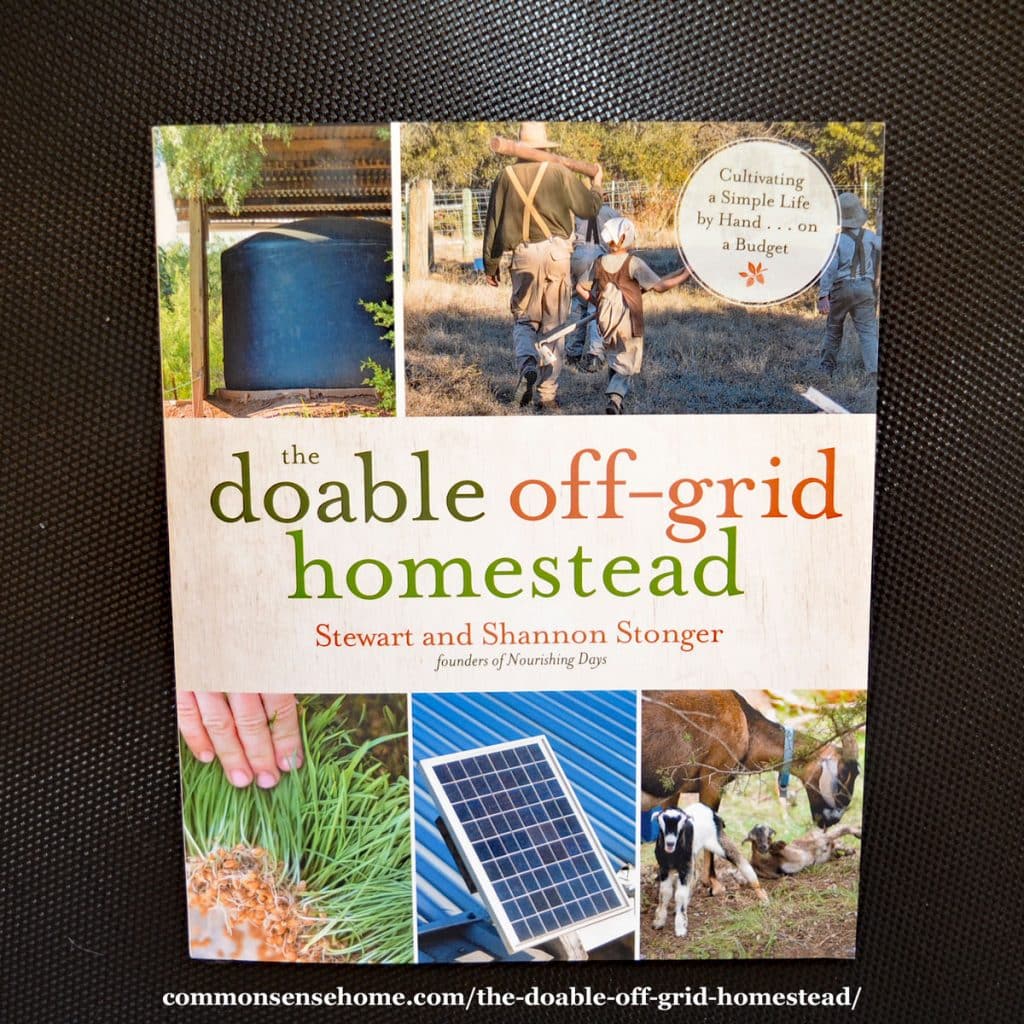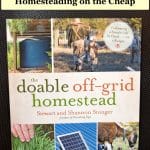The Doable Off-Grid Homestead – Homesteading on the Cheap
The Doable Off-Grid Homestead by Stewart and Shannon Stonger gives the reader a taste of off grid life on a tight budget. When they say “off grid”, they mean it. They have no grid electricity, no well or conventional running water. They share their mistakes as well as their successes. If you have a determination to get back to the land, but little money to follow your dream, this book may be a good resource for you.

The Doable Off-Grid Homestead – Back to Basics Country Living
The Doable Off-Grid Homestead is divided into two sections – “Building Infrastructure” and “Grow You Own, Make Your Home”. Chapters are as follows:
- Rainwater
- Alternative Building
- Using Solar Energy
- Land, Soil and Plant
- In the Barnyard
- The Off-Grid Home
When the Stongers began their homesteading journey, they started out with raw land, so everything had to be built. Their book shares their experience creating a humble but functional homestead in less then welcoming conditions. Their chapters on rainwater harvesting and using solar energy provide the basic information for new homesteaders. I also appreciate their emphasis on the value of animals for enriching a homestead. They don't just talk about the main animals products such as meat and eggs, but also their manure and using them for cultivation and land maintenance. They share some of their favorite garden varieties that do well in their Texas climate. There are also many projects in the book to make off-grid homestead life easier.
I'd Like to Revisit Their Off-Grid Homestead in 10-20 Years
There were many instances where I felt the authors were sharing what they had read or heard instead of what they personally knew from experience. Phrases like “some people say”, “theoretically”, and “is supposed to” littered the text. I'd like to have an updated version of the book published in 10-20 years, when they can hopefully speak with more authority and confidence in their knowledge. Some more project photos would also be welcome.
I would also caution against a couple of things recommended in the book. Don't dig planting holes for trees well in an advance of when you need to plant. You'll dry out the surrounding soil and make transplant shock more likely. Also, I would not dig holes to bury humanure to compost in place with the intention of later planting trees in these holes. You'll create a small pocket of rich soil. Trees planted in this pocket may stay in the pocket, instead of reaching out into the surrounding soil. This makes them root bound and prone to tip over in high winds. It's better to mix some compost in the native soil at planting time. (Just don't use too much. You want to encourage your trees to stretch out looking for nutrients.)
The Challenge of Living Off-Grid
Not everyone is cut out for the low budget, off-grid homestead lifestyle. I think the Stongers summarize it well when they say, “Do not try to cram how you used to live on-grid into the off-grid world you now inhabit. It doesn't fit, and you will make yourself miserable trying to get there.” This book presents a humble life of hard work and dedication. For those who are up to the challenge, it can be a good life. If you are short on cash and dream of your own homestead, check out The Doable Off-Grid Homestead.

Need more homestead reading? Check out the Homestead Library page for more reviews, such as:
- 50 Do-It-Yourself Projects for Keeping Chickens – Chicken Coops and More
- The Encyclopedia of Country Living – Endless Homestead Inspiration
- How to Make Money Homesteading
- The Independent Farmstead – Farming with Minimal or No Outside Inputs
- Going Off The Grid, The How-To Book Of Simple Living and Happiness
We also have dozens of homesteading articles on the site, listed by category on the Homesteading Index page.

